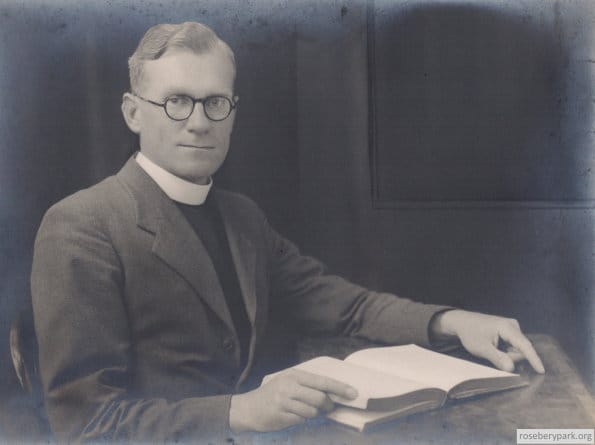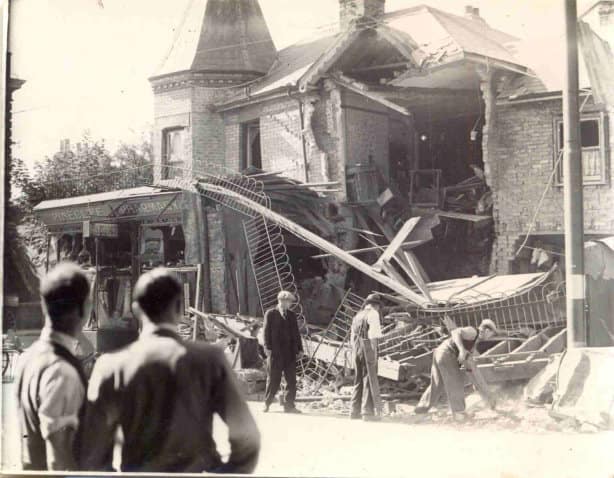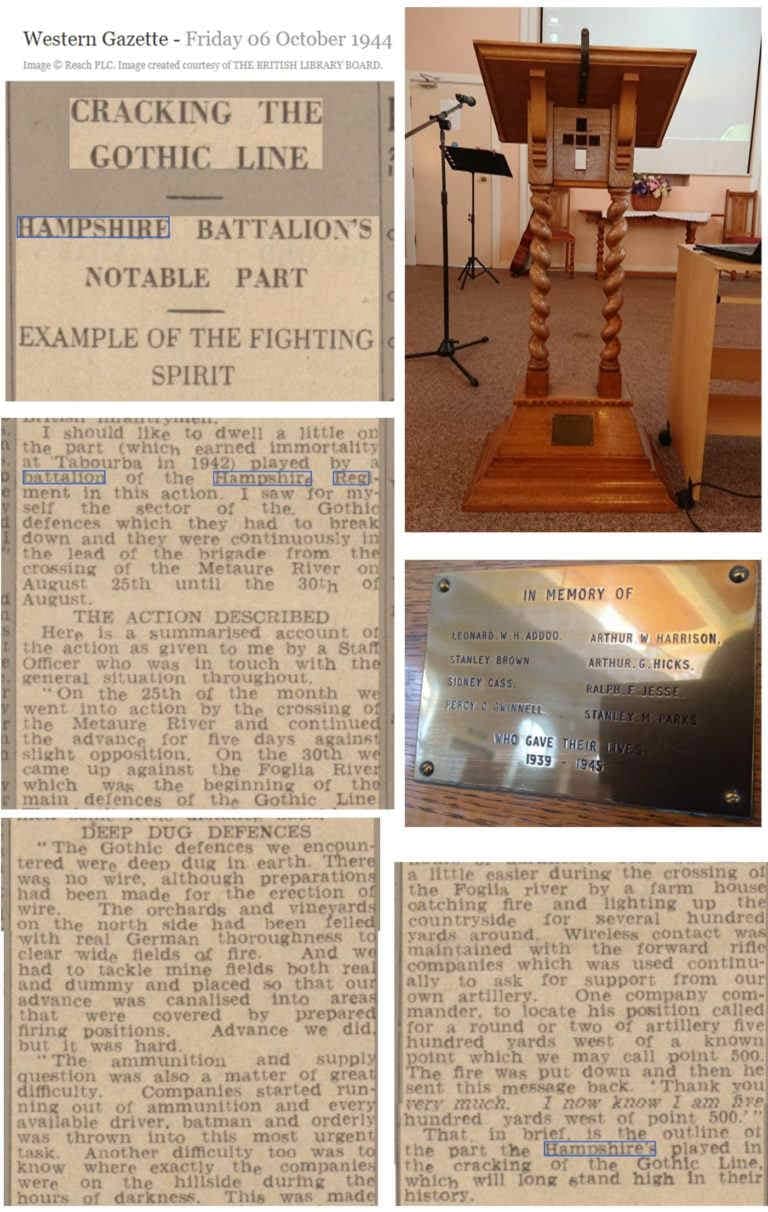
Rev Richard Fry found himself Minister during the Second World War – that meant a plan to build a new two storey building (where the original small chapel is) had to be put on hold due to war time building restrictions; a War-time Membership Roll was started for people who were temporarily in the area to add their name too; hospitality was offered to Forces personnel and blitzed or evacuated people from London; a strict blackout needed to be applied to the building.63
An alternative building extension plan for the chapel was rejected by the Town Council in 1943. Sites for a new, larger building were considered in nearby Harewood Avenue, Cromwell Road, and next to the main railway line at Christchurch Road, but all came to a dead end for different reasons. The Independent Baptist chapel, called Keswick Hall, in Christchurch Road, also came up as a possibility in April 1943, but the idea didn’t develop into anything definite. Church membership stood at 237 people and continued to grow – larger premises were becoming a necessity!64

Other events during Rev. Fry’s Ministry include the election of the church’s first lady deacon in 1943; moving from using the Baptist Church Hymnal to the 1933 Revised Edition (and subsequently having to learn new hymn tunes!); a fellowship meeting for men called ‘Men’s Fireside’; a 1945 Children’s Mission.65
When Rev. Fry left to lead another church in Brighton, it was written of him in the church magazine: “Mr. Fry holds the highest conception of his calling, has pursued it with constancy, and under the blessing of God has seen rich fruit to his labour. He has been supported in all his ministry by a gracious partner [his wife, Peggy] to whose sacrifice and faithfulness he paid high tribute”.66


Taken from M.A. Edgington’s booklet, ‘Bournemouth and the Second World War’, here is what was going on more generally in Pokesdown: the Salvation Army Hall in Norwood Place provided recreational facilities for evacuee children, and a “British Restaurant” providing a three course meal for one shilling was opened in a building specially built in Seabourne Road.
The Army Cadet Force had a platoon at the Pokesdown Boy’s Club; they provided basic army training for boys aged 14 to 16, then at the age of 17 they could join the Home Guard. The firemen made toys from scrap material to distribute to children at the Pokesdown Fire Station children’s party. Pokesdown fell victim to one night of bombing, on 2nd September 1940, when seven bombs were dropped over Seabourne Road, Southville Road, and Christchurch Road: three shops were hit and two houses destroyed, and in all 173 properties were damaged; three civilians were killed and five injured.67

In July 1949 a memorial to those who died in the war was unveiled in the church; their names are engraved on the brass plate on the front of an oak lectern: Leonard W. H. Addoo, Stanley Brown, Sidney Cass, Percy G. Gwinnell, Arthur W. Harrison, Arthur G. Hicks, Ralph F. Jesse, Stanley M. Parks.68
Leonard W. H. Addoo appears on the Roll of Honour war memorial list, which gives the following details:
“Sergeant 55033601, 2nd Battalion, Hampshire Regiment. Died 9th October 1944. Age 27. Son of William Charles and Mary Elizabeth Addoo, of Bournemouth; husband of Renee Linda Eileen Addoo, of Pokesdown. Buried in CORIANO RIDGE WAR CEMETERY, Italy. Plot XV Row F Grave 5.” 69
His parents are the couple who in the early 1920s and before were working for the church, Mr William Addoo receiving fifteen shillings a week as organ blower, and Mrs Mary Addoo receiving eight shillings a week as caretaker, plus rent-free accommodation.69a In 1911 (census year) they were living at 27 Morley Road, Pokesdown, along with their then 6 month old daughter, William’s widowed mother (Jane nee Francis) who was 74 at the time, and a lodger by the name of Robert Hackett, working as a carpenter, who was 20 years old. William’s job is listed as builder’s labourer.70
The copy and paste citation for this page:
The History of Rosebery Park Baptist Church and Pokesdown, Page 10. Author: Michelle Fogg. Date: May 2022. Url: https://roseberypark.org/history/rosebery-park-and-pokesdown-10/
Go To About Us
Go to Other Activities
Rosebery Park Baptist Church, 812-814 Christchurch Road, between Boscombe and Pokesdown, Bournemouth, BH7 6DF
